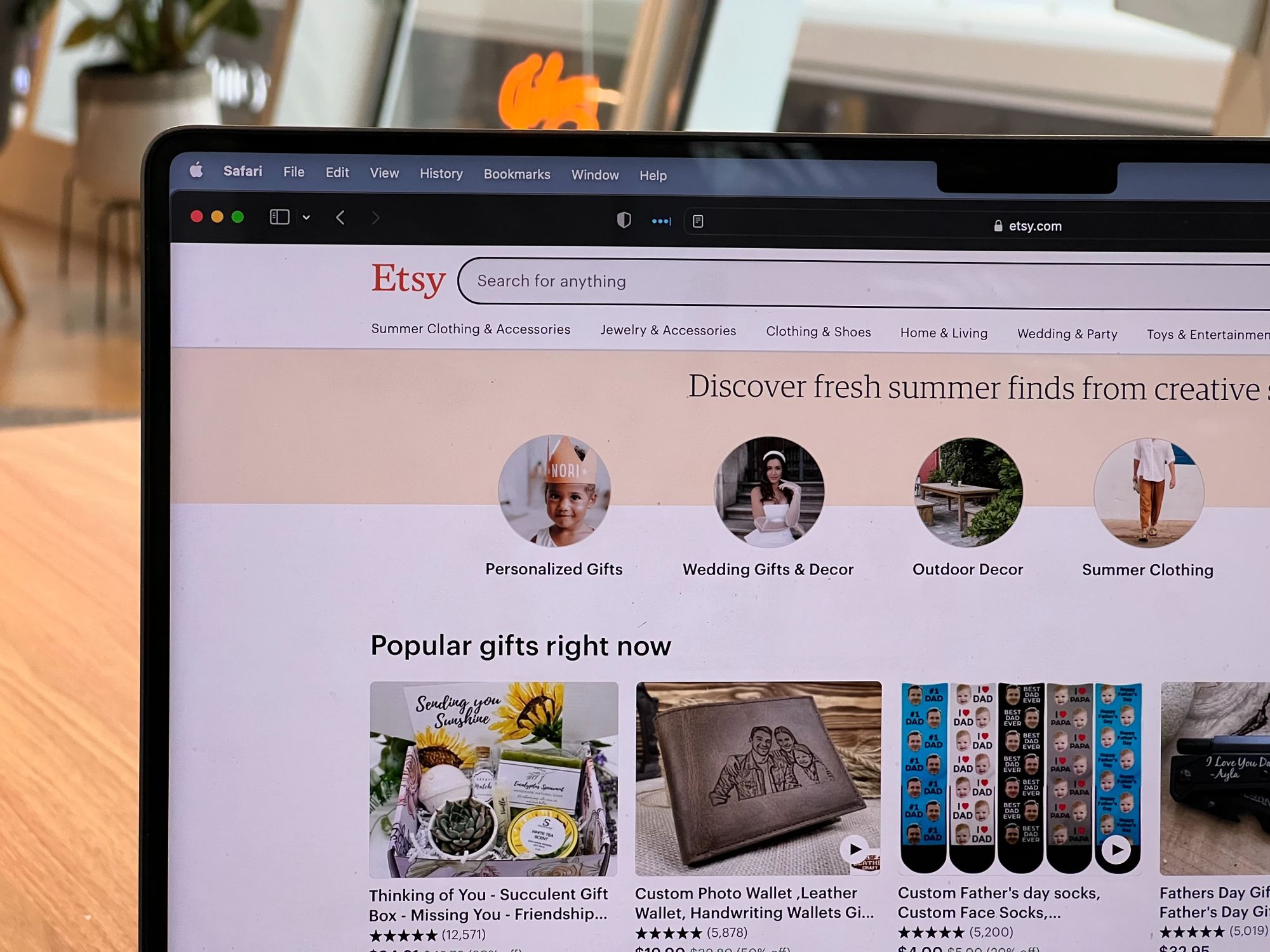If you've recently discovered dropshipping as a potential online business model, you're not alone. In fact, most people have likely purchased a dropshipped item without even realizing it, as many major online retailers offer dropshipped products.
With Statista projecting global ecommerce sales to surpass $6.3 trillion by 2024, dropshipping presents a promising opportunity to tap into the growing online market.
But here's the hard truth - dropshipping success isn't guaranteed. Some make a lot of money. Others make very little. And most make nothing at all.
Why is this the case? Many people get into dropshipping after watching trending YouTube videos where everyone seems to be trying to sell courses or scam you. Despite these scams, dropshipping remains a legitimate business model when approached correctly.
As an ERP software company, we've deep understanding of the ins and outs of dropshipping supply chain. And we're here to offer you a comprehensive look at how you can build an income-generating dropshipping business.
By the end of this blog, you'll have answers to the following questions:
- How to start dropshipping on a budget or for free?
- What strategies should you use to choose profitable products?
- Which ecommerce platform is best for quickly launching your dropshipping business?
- How can you successfully market your products?
Let’s begin.
What is Dropshipping?
Dropshipping is a retail ecommerce fulfillment method where a store doesn't keep the products it sells in stock. Instead, when a store sells a product, it purchases the item from a third party supplier and has it shipped directly to the customer. As a result, the merchant never sees or handles the product.
The biggest benefit of dropshipping is that it's possible to launch an ecommerce store without having to invest thousands of dollars in inventory up front. Dropshipping is a great business model for aspiring entrepreneurs to start with because it's accessible and has low overhead costs.
Is Dropshipping Legal?
Yes, dropshipping is legal. You may run into other legal issues depending on who your supplier is, but dropshipping on its own is a perfectly legitimate method of order fulfillment. Just remember to protect yourself with a Dropshipping Agreement Contract and you'll be fine.
You can include the First Sale Doctrine in your contract to clarify the rights and responsibilities of both parties regarding the resale of products.
The First Sale Doctrine is a USA legal principle that limits the control a copyright or trademark owner has over the resale of their products. Essentially, it means that once a product is sold, the original owner's rights are exhausted, and the purchaser can resell the product without needing further permission.
As long as the products are genuine and not counterfeit, the retailer has the right to resell them.
It's important to note that the First Sale Doctrine only applies to physical products, not digital goods. And it doesn't give the retailer the right to reproduce or modify the products in any way.
How Does the Dropshipping Process Work?
Dropshipping, sometimes referred to as retail arbitrage on platforms like Amazon in the UK and the USA, is a straightforward fulfillment business model. This method has been in use since the early days of the internet. The dropshipping process involves the following steps:
- A customer places an order in your online store.
- You forward the order and shipment details to your dropshipping supplier.
- Your dropshipping supplier prepares your customer's order.
- Your dropshipping supplier ships the order directly to your customer.
One thing to note is this is different from the Fulfillment by Amazon (FBA) model. In FBA, you have to send your inventory to Amazon's warehouses and they handle storage and shipping.
In dropshipping, you never handle the inventory yourself, which typically requires less upfront investment but gives you less control over the fulfillment process.
What Are the Advantages of Dropshipping?
Dropshipping offers several compelling benefits:
- Low startup costs - Since you don't need to purchase inventory upfront, you can start a dropshipping business with very little capital.
- No inventory management - You don't need to worry about storing, packing, or shipping products. Your supplier handles all of that for you.
- Wide product selection - You can offer a diverse range of products in your store without the risk of unsold inventory.
- Flexible location - You can run your dropshipping business from anywhere with an internet connection.
- Easy to scale - As your business grows, you can easily add new products and suppliers without increasing your workload.
These advantages make dropshipping an attractive model for both new and established entrepreneurs. It allows you to test new product ideas with minimal risk and grow your business at your own pace.
How Do You Choose the Right Products to Sell?
The hard part for dropshipping beginners is to figure out what kind of products to sell. Simply buying cheap from China and reselling high-priced items from Amazon won't work anymore. You need incredible branding, marketing, and white labeling.
These days, anyone can find those same products on Amazon for the same cost or less, and receive them in just a few days instead of waiting 7+ days from a dropshipping store.
Rebranding cheap Chinese products can often cost more than the revenue they generate. The same applies if you stock up on a large inventory and fail to sell enough to achieve a return on investment (ROI).
To succeed in dropshipping, your product needs to be unique and distinct. Compare yourself to your competition. If you don't stand out, you need to be able to spot why that is and fix it.
Niche down. Find a problem that you can solve and then sell your product as the solution. Ask yourself:
- What product do I want to sell?
- Is there enough demand for the product?
- Will it be easier to market that product?
- Will that product turn a profit?
You can get a lot of ideas of products to sell on Shopify’s blog. You can also check Google Trends and see what products could be trending online.
After that, do the same research for your competitors. You need to find out:
- Who they are
- What they do
- What they sell
- How they present themselves
- Who they target
- Their branding strategy
- Their marketing strategy
- Their communication strategy
and so on.
This way, you will gain valuable insights into lessons they learned and can avoid costly mistakes, ultimately saving you time and money.
Where Can You Find Reliable Suppliers?
Finding reliable suppliers is key to running a successful dropshipping business. Here are some ways to find them:
- Use supplier directories like SaleHoo, Worldwide Brands, and Wholesale Central. These platforms vet and curate lists of legitimate wholesalers and dropshippers.
- Attend trade shows in your niche. This is a great way to meet suppliers in person, see products firsthand, and build relationships.
- Contact the manufacturer directly. Many manufacturers have dropshipping programs or can refer you to their authorized distributors.
- Use websites like Alibaba and Spocket. Alibaba can find direct suppliers from China. While Spocket can get you suppliers from US or EU.
- For print on demand or POD, you can get dropshipping suppliers from Printful or Printify.
Remember, a good supplier should have a track record of reliability, fast shipping times, quality products, and responsive customer service. Don't be afraid to ask for references or place test orders to ensure they meet your standards.
Which Dropshipping Platform Should You Use?
For dropshipping you just need 3 things: a product to sell, a way to reach potential customers, and a website capable of closing sales. A lot of new dropshippers struggle with building their own ecommerce websites to sell their products or they go to sites like Amazon, eBay or Etsy.
But it is highly recommended to choose from existing dropshipping store builders for quick and easy execution. You have several options such as:
Shopify
This is the most popular choice for dropshippers. It's user-friendly, has a wide range of themes and apps, and integrates with many dropshipping suppliers.
WooCommerce
If you prefer to use WordPress, WooCommerce turns it into a fully functioning ecommerce platform. It's open-source and highly customizable.
Magento
This is a more advanced platform suitable for larger businesses. It offers enterprise-level features and flexibility but requires technical expertise.
BigCommerce
Another solid option that provides built-in features for SEO, product management, and more. It's a good choice for scaling your business.
You can either choose from the above ecommerce platforms for your dropshipping store. Or build your own using website builders, low-code tools, no-code solutions, or traditional web development. While building your own site can be beneficial for branding purposes, it is often expensive and time-consuming.
How Much Budget Do You Need to Start Dropshipping?
How much money do you need to start dropshipping? The short answer is $500-$1000. This is because the budget for any online business depends on two main things:
- Cost of buying the products that you want to sell. This includes actual cost, packaging, and shipping.
- Cost of marketing or advertising your product online. This includes ad campaigns on social media or search engines.
If you have enough money to do these things well, dropshipping can be very profitable.
But if you start with only a small amount of money, like $100, it will be very hard to succeed. You simply won't have enough to invest in the key areas that are necessary for your dropshipping business to grow and make money.
How to start your dropshipping business for free?
Before you get discouraged and leave, let us tell you about another approach you can take if you can't afford to put in a lot of money upfront. It is the ‘free model’ of starting your own dropshipping business.
To build a viable online store, you'll need to invest a significant amount of time instead of a budget of $500-$1000. And when we say time, we mean lots and lots of it.
- Time to understand your audience and competitors
- Time to create attractive and effective images
- Time to grow your followers organically on social media (since you won't have funds for ads)
- Time to learn essential skills like photo editing and copywriting
- Time to plan everything out, sometimes months in advance
and so on.
What Challenges Can You Face with Dropshipping?
While dropshipping has a lower barrier to entry than other business models, it's not without its obstacles. Here are some challenges you can face as a dropshipper:
Low profit margins
Because of high competition and the convenience of not holding inventory, dropshipping businesses often operate on slim margins.
Inventory issues
If a supplier runs out of stock, you'll have to deal with refunds and unhappy customers. Good supplier communication is essential.
Shipping complexities
If a customer orders products from multiple suppliers, you'll have to pay separate shipping fees that can eat into your profits.
Limited customization
Unlike print-on-demand or custom manufactured products, dropshipped goods offer minimal ability for branding and customization.
High competition
Because of its low barrier to entry, dropshipping is highly competitive. You'll need to find a way to differentiate your business to succeed.
Despite these challenges, dropshipping remains a viable model for ecommerce success. By being aware of these obstacles from the start, you can create strategies to mitigate them and set your business up for growth.
How Should You Price Your Products for Profit?
The initial step to pricing your product is to first understand your target audience by doing extensive research on them. We are not talking about "product research". But research about your audience & competitors.
You will need to find out your target audience's key information. This will include:
- Who they are
- What they do for work
- How old they are
- Where they live
- How much money they make
- What they like
- What they don't like
- What brands they love
- What brands they don't like
And so on.
Each of those pieces of information is critically important for pricing your product. For example, if their income is high, you can charge them a higher price, or offer high-ticket products.
When you’re done with that, these tips will help you to price your products better:
- Cost-based pricing: Calculate your costs (wholesale price, fees, shipping, etc.), then add a set dollar or percentage-based markup
- Market-based pricing: Analyze your competitors' pricing for similar products and price accordingly to stay competitive
- Value-based pricing: Set prices based on the perceived value you're offering in terms of product quality, branding, and customer experience
- Dynamic pricing: Adjust prices based on real-time market demands, supplier pricing fluctuations, and other variables
You need to avoid the common trap of trying to undercut competitors' pricing, as this can lead to a "race to the bottom" that erodes your margins.
Instead, look for ways to add value beyond price, like providing educational content, bundling products, or delivering standout customer service. Don't be afraid to experiment with pricing strategies to find the sweet spot for profitability.
What Are the Most Effective Marketing Strategies?
Once you find out everything you can about both your audience and competitors, you can then start building your business through marketing. One of the most important things to remember is that the key is to experiment with multiple marketing channels and double down on what works.
You’ll have to constantly monitor your metrics and adjust your strategies based on performance. Over time, you'll find the optimal marketing mix for your dropshipping business.
Here are some proven marketing strategies that you can start implementing right away:
Facebook advertising
Use Facebook ads to target specific audiences and showcase your products. You can create custom audiences based on interests, behaviors, and demographics. Facebook's robust targeting options allow you to reach the right people at the right time.
Instagram marketing
Partner with influencers in your niche to promote your products to their followers. Influencer marketing leverages the trust and authority of popular accounts to drive sales. You can also use Instagram Shopping to tag products in your posts, making it easy for customers to purchase directly from the app.
Google Ads
Use Google Shopping Ads to display your products at the top of search results. These ads feature product images, prices, and descriptions, making them highly engaging for potential customers. You only pay when someone clicks on your ad, making it a cost-effective way to drive targeted traffic.
Content marketing
Create blog posts, videos, and other content that provides value to your target audience. This builds brand authority and drives organic traffic. By consistently publishing high-quality content, you can establish your store as a go-to resource in your niche.
Email marketing
Use email marketing to grow your business. Build an email list of subscribers and send them personalized product recommendations, discounts, and content. Email has a high ROI because it allows you to nurture leads and keep your brand top-of-mind. Use engaging subject lines, compelling copy, and clear calls-to-action to maximize conversions.
Search engine optimization (SEO)
Optimize your store's pages and blog posts for relevant keywords to improve your search engine rankings. Higher rankings mean more organic traffic from people actively searching for your products. Focus on creating high-quality, keyword-rich content that provides value to your audience.
Retargeting
Use pixel-based retargeting to display ads to people who have previously visited your store. Retargeting is highly effective because it targets warm leads who have already shown interest in your products. You can use platforms like AdRoll or Perfect Audience to create retargeting campaigns across multiple channels.
Customer Reviews and User-Generated Content
Encourage satisfied customers to leave reviews and share photos of your products to build trust with potential buyers. Display reviews prominently on your product pages and share user-generated content on your social media channels to showcase real-life examples of your list of products in use.
Affiliate marketing
Partner with bloggers, YouTubers, and other content creators to promote your products to their audiences. Affiliates earn a commission on each sale they refer, making it a performance-based marketing channel. You can use platforms like ShareASale or ClickBank to find and manage affiliates.
Loyalty Programs
Implement a rewards system to encourage repeat purchases and customer loyalty. Offer points or discounts for purchases, referrals, or social media engagement, and provide exclusive perks or early access to sales for your most loyal customers.
Remember, marketing is an ongoing process. As your business grows and evolves, so should your marketing strategies. Don't be afraid to get creative and try new things – you never know what might become your next big breakthrough.
How Do You Handle Customer Service and Returns?
Providing excellent customer service is crucial for the success of any business. And to make your dropshipping business successful, you’ll have to keep your customer satisfaction above everything else. Here's how to handle it effectively:
- Have a clear return policy - Outline your return procedures, time frames, and any restocking fees on your website. Make sure it's easy for customers to initiate a return.
- Respond promptly to inquiries - Answer customer emails and phone calls as quickly as possible, ideally within 24 hours. Use Customer Relationship Management or CRM software to manage and track inquiries.
- Be proactive with updates - If there are any delays or issues with an order, reach out to the customer immediately to let them know and offer a solution.
- Offer multiple support channels - Provide customer support via email, phone, live chat, and social media to cater to different preferences.
- Turn negatives into positives - If a customer has a bad experience, go above and beyond to make it right. Offer a refund, replacement, or discount to turn them into a loyal fan.
Is Dropshipping Worth It?
Dropshipping can be a tempting business model, but is it truly worth your time and effort? While it offers low startup costs and minimal inventory management for your ecommerce, success isn't guaranteed. Many newcomers face fierce competition and slim profit margins.
You'll need to master marketing, customer service, and product selection to stand out.
Plus, you're at the mercy of suppliers for product quality and shipping times. However, with dedication and smart strategies, dropshipping can be profitable. It's an excellent way to learn ecommerce basics and test product ideas without major financial risk.
The key is to find a unique niche, build a strong brand, and provide exceptional customer experiences. Ultimately, dropshipping's worth depends on your goals, skills, and willingness to put in the work. It's not a get-rich-quick scheme, but it can be a viable path to online business success. So, yes, dropshipping is worth it.
How Deskera Helps Your Dropshipping Business
As your dropshipping business grows, you'll face new challenges in managing your operations. With more customers, suppliers, and products to keep track of, things can quickly become overwhelming. You may find yourself spending hours on manual data entry, struggling to keep up with orders, and losing track of important information.
That's where Deskera ERP comes in. Deskera is an all-in-one software solution designed to help you streamline your dropshipping business and manage your growth with ease. With Deskera, you can:
Here’s how Deskera ERP will help your growing dropshipping business:
- Inventory management: Tracking stock levels across multiple suppliers.
- Order processing: Managing orders from multiple sales channels.
- Financial management: Handling accounting, invoicing, and financial reporting.
- Customer relationship management: Tracking customer interactions and sales history.
- Reporting and analytics: Providing insights into business performance.
By using Deskera ERP, you can save time, reduce stress, and focus on growing your business. Plus, with Deskera's expert support team, you'll always have help when you need it.
Sign up for a free trial of Deskera ERP today and see the difference for yourself. Schedule a call with our experts to learn more and get started on your growth journey.
Key Takeaways
To summarize, here are the key takeaways from our guide on dropshipping:
- Dropshipping is a legal retail fulfillment method where stores don't keep inventory, instead forwarding customer orders to suppliers who ship directly to customers.
- While dropshipping offers advantages like low startup costs and flexibility, it also presents challenges such as low profit margins, potential inventory issues, and high competition.
- Success in dropshipping requires focusing on unique products that solve problems and finding reliable suppliers through various channels like directories or trade shows.
- Thorough research of your target audience and competitors is crucial, as is strategic pricing based on factors like costs, market rates, and perceived value.
- Popular platforms for dropshipping include Shopify, WooCommerce, Magento, and BigCommerce, with a recommended starting budget of $500-$1000 for product costs and marketing.
- Effective marketing strategies for dropshipping businesses include social media advertising, content marketing, SEO, email campaigns, and partnerships with influencers.
- Excellent customer service, including clear policies, prompt responses, and professional handling of returns, is essential for maintaining customer satisfaction and business success.
Related Articles













